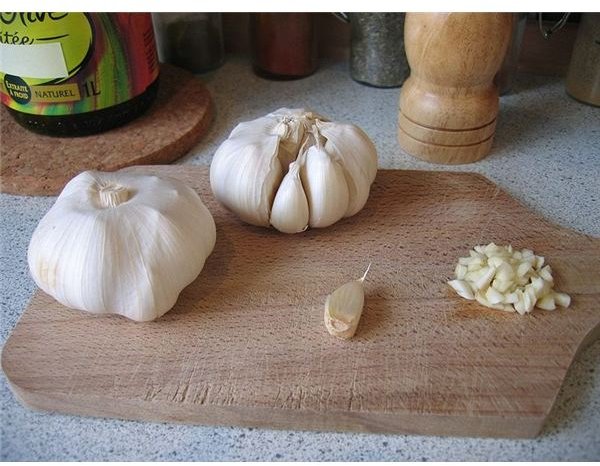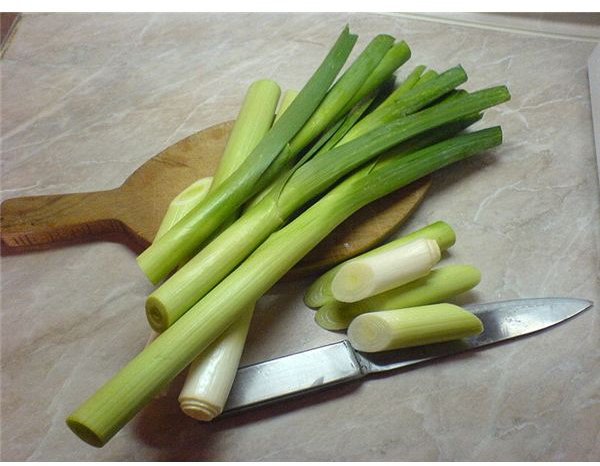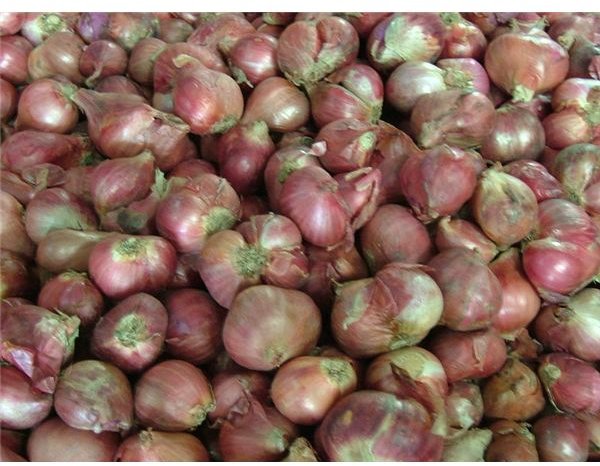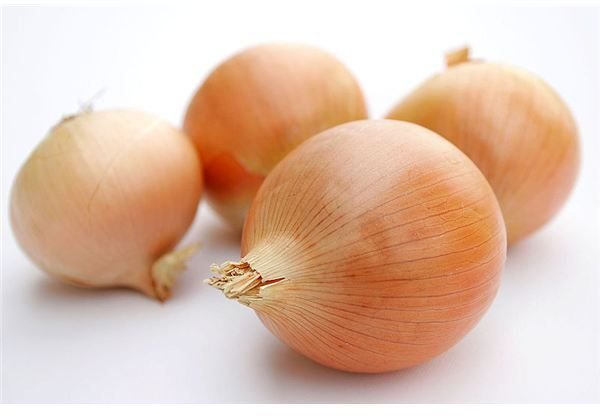What Are Allium Vegetables and Why Should I Eat Them?
Meet the Family
What are allium vegetables? The Allium family includes such well-known vegetables as onions (A. cepa), garlic (A. sativum), leeks (A. Ampeloprasum var. porrum), and shallots (A. cepa). Contrary to popular belief, rather than being a type of onion, scallions are actually immature onions, which are harvested before the signature bulb shape is fully formed.
The other members of this family may be less well-known, but they are just as tasty and nutritious as their more popular relatives. Look for varieties like Chinese chives, kurrat, and rakkyo when you are searching for new ways to add flavor and a nutritional punch to everyday meals.
Why You Should Eat Alliums
While it would require several volumes of books to offer a complete listing of all the benefits of eating members of this vegetable family, there are six key reasons that really stand out from a health and nutritional viewpoint. Here they are (in no particular order of importance):
- Eating them helps protect against certain cancers and lower the risk of serious health problems like cardiovascular disease or high blood pressure.
- Alliums are an extremely rich source of flavonoids, anthocyanins and polyphenols.
- The nutrients in these vegetables support the health of the cardiovascular, digestive and central nervous systems.
- They contain no cholesterol and are low in fat and sodium but high in beneficial dietary fiber.
- Preliminary studies show a link between eating certain alliums like garlic and seeing a decrease in blood pressure levels.
- The antioxidants and phytochemicals found in them can reduce and repair free radical damage according to Dr. Kerrie K. Saunders, author of The Vegan Diet.
About Onions and Their Health Benefits
From a culinary standpoint, onions are a good choice for meal plans because they add a unique flavor and aroma to other foods as well as taste delicious when consumed solo. From a nutritional standpoint, onions are one of the best cancer protective foods individuals can consume.
This is because they contain exceptionally high amounts of the flavonoid quercetin. In fact, eating onions regularly may lower the risk of developing certain cancers because of the flavonoids’ health benefits according to Crystal Whitten, author of “Antioxidants and Phytochemicals”.
George Mateljan, in his article “What’s New and Beneficial About Onions" states there is documented research that consuming onions daily can increase bone density and connective tissue health and reduce the risk of hip fracture for women.
Make sure you ingest the highest dose of this beneficial nutrient by peeling the onion as thinly as possible because the nutrient is concentrated in the outer layers of the onion. Cook onions at the lowest possible heat to protect the vital allicins and flavonoids. Onions can be enjoyed either cooked or raw and some individuals like to eat them out of hand like an apple.
The three main types of onions are white, yellow and red. Yellow onions are the most prevalent in the market and that is because they are the most shelf stable. Their taste and aroma is the most pungent of the three types and they can be used fresh, frozen, powdered or dehydrated. While red onions have the shortest shelf life, they are the sweetest and contain the highest amount of the beneficial flavonoid quercetin. White onions fall in between these two extremes for shelf life with most white onions being grown for use as scallions or green onions. Their flavor is typically mild and somewhat sweet, and they contain the smallest amount of quercetin.
Garlic Tips and Tidbits

As it matures, garlic forms one large bulb that is composed of many smaller facets called cloves. It can be eaten raw or cooked and is available fresh, dried or powdered; however, to obtain the maximum health benefits, it is best consumed fresh. To preserve the allicin (sulfur compounds), George Mateljan recommends letting the garlic stand for a few minutes prior to cooking it.
Eating garlic may be beneficial in lowering high blood pressure and protecting against cancer. In addition to containing allicin, garlic provides significant dietary amounts of manganese and vitamins B6 and C.
Shallots and Leeks


In appearance, leeks look like gigantic versions of scallions (green onions). Leeks are the largest member of the allium family but unlike the others; do not form a bulb when mature. They contain the flavonoid kaempferol, which helps the body’s blood vessel linings resist damage. In addition to the other health benefits they offer as alliums, they provide manganese, vitamin C, iron and folate.
If you have never tried a shallot, you are in for a tasty delight as their flavor is a unique combination that is reminiscent of the pungency of garlic married to the sweetest of some types of onion. They resemble garlic in their appearance, which is more tapered than bulb shaped, and just like garlic, they separate into cloves when peeled. Shallots come in small clusters that are attached by copper colored skins at the bottom of the cluster.
If you are looking for a way to achieve the highest nutritional punch by adding nutritious foods to your daily diet, consider adding shallots to your meals. According to Dr. Jonathon Wright, a research study showed that “Shallots had the highest antioxidant activity among the 11 varieties tested, with six times more phenolics than the lowest rated onion, the Vidalia.”
Whether you choose to stick with a tried and true favorite like onions or garlic or you opt to experiment with a more exotic alluim variety, understanding what allium vegetables are and why you should eat them furnishes you with the information to make better nutritional choices.
References
Saunders, Kerrie K., M.S., L.L.P., C.A.C.-1, C.P.C., Ph.D., The Vegan Diet, Lantern Books, 2003
Bauer, Brent, M.D. “Supplements to Avoid When Dealing with High Blood Pressure,” The Mayo Clinic,https://www.mayoclinic.org/medical-edge-newspaper-2010/mar-12b.html
Plants for a Future, “Allium ursinum Wild Garlic PFAF,” https://www.pfaf.org/user/Plant.aspx?LatinName=Allium%20ursinum
Harvey, Michael J., “Advances in New Alliums,” Purdue Agriculture, Horticulture, and Landscape Architecture, https://www.hort.purdue.edu/newcrop/proceedings1999/v4-374.html
Mateljan, George, “What’s New and Beneficial About Onions,” WHFoods, https://www.whfoods.com/genpage.php?tname=foodspice&dbid=45
Whitten, Crystal, “Antioxidants and Phytochemicals,” Loma Linda University,https://myllu.llu.edu/blogs/sphdean/fruits-and-vegetables/
Wright, Jonathon V., “The Health Benefits of Eating Onions,” Dr. Jonathon V. Wright’s Nutrition and Healing, https://wrightnewsletter.com/2005/05/19/the-health-benefits-of-eating-onions/
The World’s Healthiest Foods
Image Credits
Red onion slices by darwin Bell used under CCA 2.0
All Garlic Ail Ajo by Joanjoc used under CCA SA 3.0
Leeks by Biso used under Public Domain
Shallots by Midori used under CCA SA 3.0
